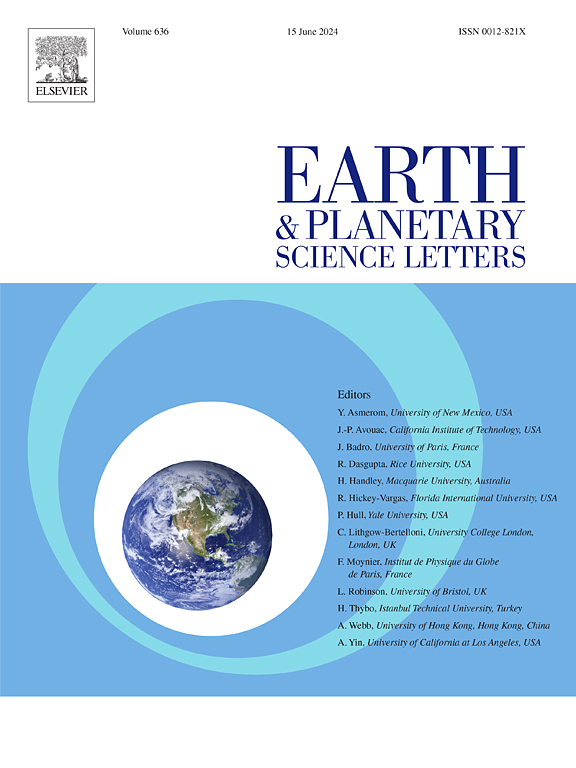Orogenic lamproites from Italy formed by mixing of highly potassic and shoshonitic melts
IF 4.8
1区 地球科学
Q1 GEOCHEMISTRY & GEOPHYSICS
引用次数: 0
Abstract
Strongly alkaline potassic magmas, such as lamproites and kimberlites, are prime examples of melts that require metasomatised mantle sources containing hydrous minerals, but the exact source assemblage and melt generation process is not well-understood. Here we investigate the source of orogenic lamproites and cogenetic shoshonites from the Plio-Pleistocene Tuscan magmatic province in central Italy, using the major-, volatile-, trace-element and Sr-Nd isotope compositions of melt inclusions (MIs) in Fo84−95 olivine from Torre Alfina and Radicofani. The MIs hosted by exceptionally forsteritic olivine (Fo93−95) have high K2O (11–17 wt%), MgO (6–13 wt%) and low Al2O3 (7–13 wt%) and SiO2 contents (47–56 wt%), clearly unlike the erupted lamproitic lavas. Their olivine hosts also contain carbon dioxide- and rare nitrogen-rich fluid inclusions. A second melt inclusion group, which occurs in Fo88−93 olivine, records compositions that trend towards much lower K, Mg, and higher Al and Si contents. Both inclusion groups show positive correlations between P, F, Ca, Ti, and most trace elements, signifying an important and variable role for accessory apatite and Ti-oxide in the source. The compositions of the Fo93−95 olivines and their exceptionally K-rich MIs closely resemble incongruent melting products of hydrous pyroxenites containing phlogopite, K-richterite, and clinopyroxene at ∼ 1.5–2 GPa. Coupled with the presence of nitrogen-rich inclusions, this suggests that these olivines and MIs are the products of the reaction K-richterite + phlogopite + clinopyroxene → melt + olivine, in which peritectic olivine trapped the melt with which it formed, and the nitrogen was liberated from ammonium-bearing phlogopite/amphibole. The second melt group records compositions that trend towards shoshonitic compositions created by melting of a phlogopite-bearing lherzolite. This shoshonitic melt is similar to Radicofani shoshonite MIs (in Fo84−90 olivine), although the former requires some apatite and Ti-oxide in its source. In conclusion, the Tuscan lamproites are formed by mixing between unusually K-rich melts (∼ 20%) and shoshonitic melts (∼ 80%). These findings highlight the importance of incongruent melting and melt mixing in the generation of orogenic lamproites.
求助全文
约1分钟内获得全文
求助全文
来源期刊

Earth and Planetary Science Letters
地学-地球化学与地球物理
CiteScore
10.30
自引率
5.70%
发文量
475
审稿时长
2.8 months
期刊介绍:
Earth and Planetary Science Letters (EPSL) is a leading journal for researchers across the entire Earth and planetary sciences community. It publishes concise, exciting, high-impact articles ("Letters") of broad interest. Its focus is on physical and chemical processes, the evolution and general properties of the Earth and planets - from their deep interiors to their atmospheres. EPSL also includes a Frontiers section, featuring invited high-profile synthesis articles by leading experts on timely topics to bring cutting-edge research to the wider community.
 求助内容:
求助内容: 应助结果提醒方式:
应助结果提醒方式:


